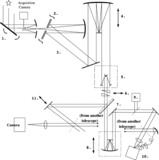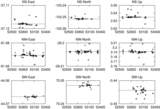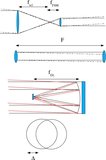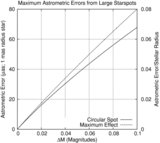Image Details
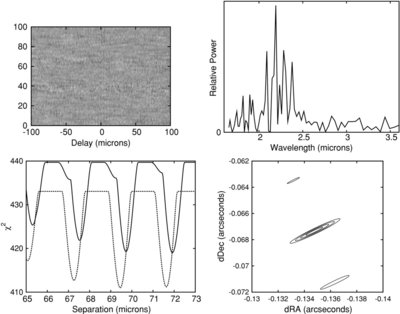
Caption: Figure 2.
Several steps of the data processing pipeline are shown for an observation of HD 13872 (21 Ari) from MJD 54,385.33270. Upper left: raw interferograms show two distinct fringe packets, one from each star in the over-resolved binary. One star was found near zero delay, the other at ~±70 μm. The flipping from side-to-side was a result of the fringe tracker first tracking on one star for some scans, then the other. Upper right: the periodogram of one scan used to evaluate the fringe S/N within the optical passband used ( K-band, 2.0–2.4 μm). The power in the passband is not flat, but rather oscillates, a result of the object being a binary star (visibility changes with wavelength). Lower left: the likelihood metric χ 2 as a function of delay separation of the binaries for two scans. Note there are multiple minima separated by the fringe modulation period, and the noise is large enough to prevent high confidence identification of the correct local minimum. Lower right: the co-added χ 2 surface in differential R.A./decl., with contours corresponding to 1σ, 2σ, 3σ, and 4-σ confidence regions. Note that in this case sidelobes appeared at the 4σ confidence level, so the measurement was rejected as ambiguous.
Copyright and Terms & Conditions
© 2010. The American Astronomical Society. All rights reserved.


